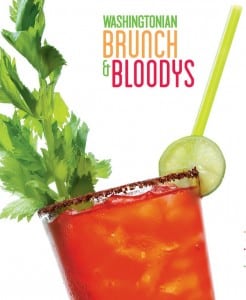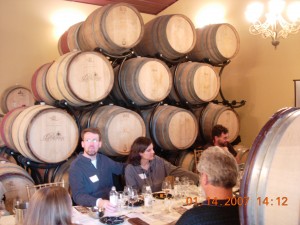Archive for the ‘wine festival’ Category
Back in Action – Now in the Food and Drink Festival Business!
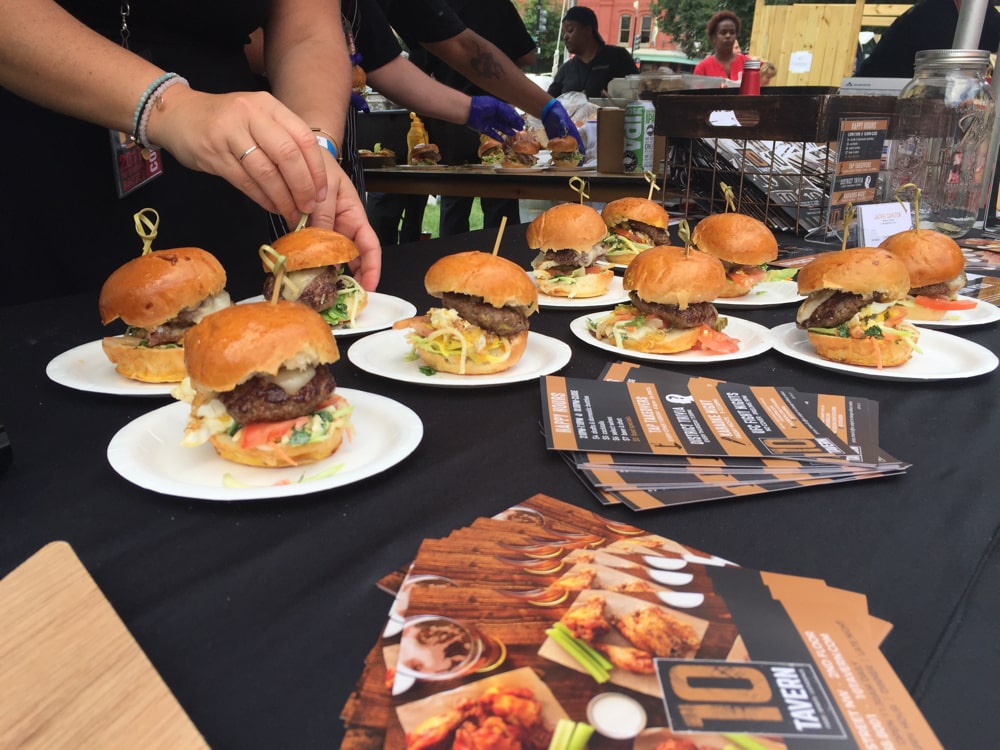
DC Burger Bash which was held at the National Building Museum outside grassy area, August 24th, 2017
I’m Baaack!! OK, so some interesting changes – I now have organized/managed two festivals – The Virginia Wine Festival (R) and the Taco, Beer, Tequila Festival – the 1st event came to me seeking new management, the 2nd one I created from scratch. There have been many ups and downs since 2016 when I took over the Virginia Wine Festival Management and completed the Taco Festival – hopefully the learning curve will help me better manage the future!
1)Managing people is the hardest part of event management for an outdoor festival – I thought that by hiring outside “guns for hire” as the Logistics specialists for an event that I could handle all event issues. Although I think both Logistics teams did a better than average job, they weren’t personally invested in the event and it became obvious on event dates.
2)Event marketing can work 100% digital. I was told by the Association that holds the rights to the Virginia Wine Festival that I would probably have to use some traditional media such as radio, print, and ticket give-aways as a means to successfully selling enough tickets. Since I already have a substantial active email list with TasteUSA I decided to use that email list, Facebook and Google Adwords. The Results were overwhelming – most event consumers, especially younger Millennials use Google and online means to find events and purchase tickets. Eventbrite ticketing, Facebook and Adwords pixels and email marketing in general are the hot buttons for consumer ticket sales.
3)Generic Events make no sense in a competitive environment – Sure, I could have just taken over the Virginia Wine Festival and left everthing the same – but why not add Virginia Oysters – better yet, why not create “an event within an event” – the VA Oyster Pavilion? By adding a new marketing “twist” I took an existing event and made it a wine AND food festival. So I created a Taco Festival – but why not add the “Tequila Pavilion”? Generic beer and wine festivals with no interesting food or story line will in my opinion have to keep lowering their ticket prices in order to compete with more and more “me too” events.
Great to be in touch with my foodie readers again – keep on eating and drinking the good stuff!
Charlie “I Drink on the Job” Adler
My Attempt at Tasting 250 New Wines – Wines of Portugal Tasting
Portugal is Unique in that they produce 250 grape varietals unique to their region..
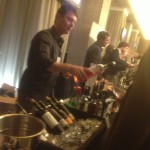
OK, I didn’t actually try to taste 250 new grape varietals (can you say “Alvarinho”, “Baga” “Trincadeira” or “Touriga Nacional” ?) but I did try to better understand the wonderful variety of wines coming from a country with a unique language and known more for fortified wines – their Ports – than for their still wines.
The best part of my tasting was the seated seminar with Evan Goldstein
– I had seen him in videos, but it was great to actually meet the wine powerhouse in person. Passionate is not a wasted word on this wine lover – he really presented with energy and humor and a keen sense of fun and adventure – he popped a few key Portguese words into the presentation but for the obvious effect – few people understand the language!
So what did I learn from the seated tasting of 7 wines (it was supposed to be 8, but one never made it through shipping!) ?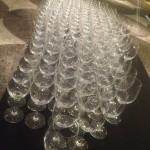
-Vinho Verde which translates as “Green Wine” does NOT mean green-hued wine, but rather a wine meant to be consumed “young”.
-Portuguese “Verdelho” is NOT the same as Spanish “Verdejo”
-There is a Rose Vinho Verde
-There are many micro-climates and the wines from the southern planes tend to ripen very evenly from year to year.
-Moscatel de Setubal is a Muscat Fortified wine other than Port from the southern Peninsula and has more of a golden raisin/apricot flavor than Ports more prunish, dark fruit flavors.
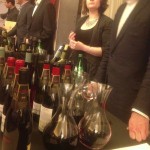 Overall I was impressed by the consistency of the wines – most had abundent acidity and enough fruit and flavor for backbone. Some of the reds such as the pure Touriga Nacional’s were quite tannic and “cedar box” spice, but still the average quality of wines was quite good.
Overall I was impressed by the consistency of the wines – most had abundent acidity and enough fruit and flavor for backbone. Some of the reds such as the pure Touriga Nacional’s were quite tannic and “cedar box” spice, but still the average quality of wines was quite good.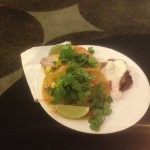
I do want to mention that TasteDC was affiliated with the Consumer Grand Tasting that evening and helped to sell it out – although the wines were the same in the consumer tasting, the food was much better than the Trade got which is actually a good thing. Also the food was quite good – really tender carved Roast Beef, Ham Table, Specialty Taco Table and something I hadn’t seen before – a Ramen Noodle table with the chance to choose your own noodles and fixings- this kept the Vegetarians happy – Cheers!
Charlie “I Drink on the Job” Adler
I Forgot to Spit! 80 Sips Comes to DC..
Professionals Spit Their Wines Out for a Reason..
How many times have I heard at a wine tasting – “why should I spit out or dump my wine out – I paid good money to attend this event?” Well, at a recent wine tour that came to DC Around the World in 80 Sips presented by Bottlenotes everyone behaved pretty orderly, but I had to recant tales to fellow wine lovers what the point of the spit bucket is – to prevent being bombed! What I always find entertaining about 100+ person walk-around wine tastings is how formal people are at the beginning of an event..maybe even a bit uptight..but how much they loosen up after the first hour or so.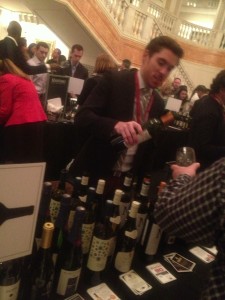 So Is There Proper Etiquette at a Wine Tasting?
So Is There Proper Etiquette at a Wine Tasting?
You know what they say about Americans – Anything Goes we take our democratic freedoms seriously, and we don’t like when people tell us to behave. Having said that, Americans often feel directionless when it comes to cultural events and particularly wine – what is the “proper” way to behave at a wine tasting? Believe it or not, I think many people are TOO polite at wine tastings, so here are some fun rules which you may feel FREE TO BREAK:
Rule #1: “Thou Shall Not Drink Everything In Thy Glass” The purpose of a spit bucket is 2-fold: first, so you can spit out wine so that you can drink more and not get drunk; second, so you can dump out excess wine for the same reason – not to get drunk! The wine professionals pouring the wine EXPECT you to dump out excess wine..they’re hoping you do so, they don’t want people to drink too much! Maybe it seems wasteful to Americans to throw away wine, but there’s a reason these are called “tastings”..dump away..
Rule #2: “Thou Shall Rinse Thy Glass Between Wines, But Not With Water” You rinse your wine glass so that the next wine tastes like the wine should. If you rinse your glass with water, that water will DILUTE the wine you’re about to taste..and it’s usually a pretty small pour. The way the PRO’s do it, is we ask for a little pour of the wine we are about to drink, we swirl and pour that excess into the bucket, and then we wait for the wine to be poured..in this way, the wine you’re tasting tastes like the..well, uhh..wine you’re tasting – not a blend of water/wine or wine and something else..I know, it seems like YOU’RE WASTING WINE..get over it..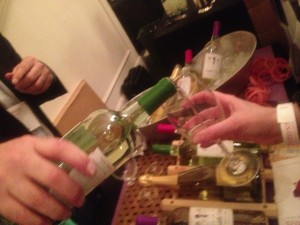
Rule #3:“Thou Shall Move Close to the Pourer and Put Thy Wine Glass Out To Receive a Pour” I actually have a funny story in my book I Drink on the Job about a woman who walked up to receive a pour of wine, but never put out her glass..she just stood in front of the table..thinking..about what, I have no idea, but when she was offered a pour of wine, she acted like it was an offense! Don’t use your time at a wine tasting to ruminate..you’re there to taste (NOT DRINK) wine..yes, of course take a few breaks, talk with your friends, get some food, etc..but use your time EFFICIENTLY. Walk up to the wine table and find a little space to stand, put out your wine glass (do not hold it close to your body..this is how you get wine on your clothing, and that’s a BAD THING!), and either wait for the wine to be poured or request a wine to be poured..this is NOT RUDE – this is actually proper..it’s efficient too..Personally, I’m a machine when I taste: stand, offer glass, swirl, look, sniff, taste, spit or swallow, spend moment in reflection on the wine, dump wine, REPEAT..
Rule #4: “Thou Shall Not Wear Perfume, Cologne or Anything That Has an Aroma at a Wine Tasting”I’m smelling coconuts in my wine..but, it’s not emanating from the glass – somebody wore a body lotion that smelled like coconuts! Actually, I spoke with her and she was very nice, but whenever she was within 5 feet of me..ALL I COULD SMELL WAS COCONUT LOTION!
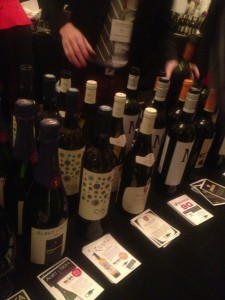
Hopefully, you take this post with good humor – none of the above mentioned Rules is really written in stone. We Americans love our independence and freedom, but when we try to behave at a cultural event, maybe we’re actually too polite..I’m not saying you should be a hillbilly and come into a wine tasting with a cavalier attitude, but it’s OK to loosen up, enjoy, and even have lively banter at a wine tasting. Within the confines of a wine tasting, there is room for self-expression, creativity, and of course conviviality, but it’s best to get the etiquette down pat first – Cheers!
Charlie “I Drink on the Job” Adler
Some Upcoming Wine Events on TasteDC:
– 4-Course Wine and Soul Wine Dinner, Tuesday, March 19th at The Fairfax Hotel at Embassy Row
– Cheese Class with Rogue Creamery’s Cheese Maker, Wednesday, March 27th, Ici Urban Bistro, 806 15th St., NW, Washington DC 20005
– Wines of Portugal 2013 Annual Grand Tasting (Special Discount..), Thursday, May 2nd, W Hotel Washington D.C. 515 15th St NW , Washington DC 20004
TasteDC Launches with Grand Bordeaux Tasting – 100 Chateaux and Counting!
What Better Way to Start Than with THE Grand Bordeaux Tasting..
Most Start-ups launch with a big PR blitz and lots of sizzle and noise. That’s great, especially if you have lot’s of venture capitalists/financiers behind you and money to throw..unfortunately, I do not! Still, what better way to launch TasteDC (still needs some Design work – sort of a house that needs door knobs and paint) than with a GRAND Tasting – I mean it’s even in the name – Union des Grands Crus de Bordeaux!
So what should you expect at this tasting?
1) Great Producers Showcasing a Fantastic Vintage -I’m attaching the list of producers (below) – I know, it’s completely Overwhelming – sort of like going to the store and seeing all those Chateaux on the wine labels and trying to figure out: 1)which one will taste good and 2)why are the prices all over the place – I mean should I really spend $49.99 on a wine when the label on the wine next to it is $8.99? The Grands Crus are the best wine makers in Bordeaux, so you can expect to taste some really great wines.
2) A Chance to Connect and Understand Bordeaux Better – first of all, what is Bordeaux? Bordeaux is one of the largest wine growing regions in the world – it’s in Southeast France just off the coast of the Atlantic Ocean. The French label their wines primarily by Region (versus by Varietal as we do in America – we say “Cabernet Sauvignon”, the French say “Bordeaux” – get it?) If you like Big Reds, then Bordeaux has them – most are Cabernet or Merlot based, so these give them some weight. Meat eaters love Bordeaux, but they’re surprisingly good with hard cheeses and earthy dishes, especially the kind most people eat in Fall and Winter.
3) Finally Understand What “Vintage” Means and If It’s Important – Vintage is the year the grapes are picked/harvested..NOT the year the wine is bottled – Memorize that! Now that you know, why does it matter? Because grapes are grown outside and the weather and external conditions has a major impact on their ripeness and flavor. Some years are good, some not so much – but 2010 was a stellar growing season for great grapes and thus great wines from this region. Also in great vintages, everyone makes great wine – so you don’t have to purchase the top Names, try and enjoy wines from lesser known producers.
5)There are Five Grands Crus – Five Growths – usually a First Growth costs more than a Second, Second more than Third, etc..it’s not always true, but if you want to understand this better (also called the “1855 Classification”) go here.
Event: Official Unions des Grands Crus Bordeaux Tasting – the Amazing 2010 Vintage
Date: January 24th (Thursday), 2013
Time: 5 – 8 pm
Location: The Willard Intercontinental Hotel, 1401 Pennsylvania Ave., NW Washington, DC 20004
Ticket Price: $99/per person (note Special Valet Parking Price Available on Ticketing Form)
***Tickets Have Limited Availability***
Charlie “I Drink on the Job” Adler
A Wine Tasting – What’s in a Name?
I’ve organized or promoted over 1,000 wine tastings and wine classes in the Washington, D.C. area since 1997 through my organization TasteDC.com. A few times a week I get a phone call at headquarters (a room in my Georgetown townhouse with 2 computers, a color printer and a Fax..but it IS Ground Zero for DC wine tastings!) asking me to organize a wine tasting or class for a group of say maybe 15 people. What’s funny/unfortunate/amazing is that the call is almost always the same – THEY HAVE NO IDEA WHAT A WINE TASTING IS OR WHAT THEY’RE LOOKING FOR!
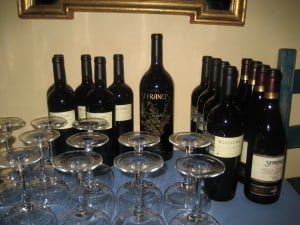 A wine tasting is an event from the TasteDC perspective – it has a beginning time, an ending time and a theme to fill the middle of the tasting. Say for example, a wine tasting of wine styles: rent a room, supply it with glassware (maybe a little food – cheese, crackers and bread would be nice!), a selection of wines with say three different “styles” (could be anything, but normally it might be light-bodied, medium-bodied and heavy-bodied wines) and put them at their own tables with volunteers pouring the wine..or people could pour their own wine – then we suggest you put out an information tasting sheet on each wine..
A wine tasting is an event from the TasteDC perspective – it has a beginning time, an ending time and a theme to fill the middle of the tasting. Say for example, a wine tasting of wine styles: rent a room, supply it with glassware (maybe a little food – cheese, crackers and bread would be nice!), a selection of wines with say three different “styles” (could be anything, but normally it might be light-bodied, medium-bodied and heavy-bodied wines) and put them at their own tables with volunteers pouring the wine..or people could pour their own wine – then we suggest you put out an information tasting sheet on each wine..
RECAP:
- Do you have a Date?
- Do you have a Venue?
- Do you have a wine “theme”?
There are literally thousands of ways to organize a wine tasting! I do want to make note – if you use the term “wine class” that most likely means a seated event with a speaker. Does a wine tasting necessarily need a speaker? No – the simple answer is sometimes (most of the time!) a speaker ads an unnecessary expense to a tasting – speakers charge for their services and the fees range significantly (I start at about $500 per event, but I have other ways to increase my profitability – hey, don’t attendees want a copy of my book “I Drink on the Job” ?
I’m going to write more about what to look for in a wine tasting – both for a private group and for a fun public form of entertainment – keep checking back – Cheers!
Charlie “I Drink on the Job” Adler
The Grouponater Effect
I knew the day would come, but I was pushing it off as long as possible..after 14 years, over 1,000 wine tastings, 200 cooking classes and dozens of specialty culinary events (Unique Food and Wine Festival, Chorizo Making class, etc.) would I give up TasteDC?? I knew some current facts:
The game had changed post 2008 Recession:
People spent their home’s future value – the ’08 Recession in a nutshell..banks were lending against a home’s equity..or estimated equity..a bubble..yep, it burst, go figure! When you run a small tasting event business, you need to focus on high margin, low volume events – in other words, lots of small wine classes, cheese tastings, and an occasional mini-festival. I never reached Big for the large events preferring to stay with a small staff (often just me and part-time help!) and slowly increasing the number of events. From 1997 to 2007, TasteDC went from organizing one event a month to as many as fifteen a month. When the bubble burst, people didn’t want to splurge – no one wanted to act like they had any disposable income, it just wasn’t the thing to do. My business dropped by over 50%..
Perceptions of value had changed:
In 1999 a wine dinner was something pretty unique and unusual – wine lovers were still a rarified group who often spoke in a language that no one understood. Wine was prestigious, intellectual and sophisticated and the people who drank it often travelled around or had lived abroad, were college educated and possibly even a bit snobbish. Wine dinners – defined as multi-course seated meals with at least one wine paired per course (but often 2 or more wines per course!) and normally a wine presenter discussing the pairings were relatively expensive – a 4 course wine dinner at a fine dining restaurant would cost you $85 to $150 per person inclusive of tax and tip. Believe it or not, many of these dinners sold out at 35+ people and there never seemed to be enough inventory of this kind of event.
Over time, wine became less prestigious and more of a daily consumable – this is actually a good thing. No longer is wine placed on a pedestal, it’s something you can pick up for a meal at the local grocery store or 7-11 and even casual dining restaurants normally carry at least 20 different kinds of wine in the DC area. Economically speaking, wine dinners have actually gone down in price and consumer perception of value – today, a 5-course wine dinner is often under $100 per person, and many of them barely get ten people to sign-up.
And recently, wine dinners are being replaced with the newest premium beverage to hit the DC Foodie scene – craft beer dinners. Most craft beer dinners are 5-courses and under $70 per person inclusive of tax and tip. Craft beer is perceived to be more approachable and fun than wine, so these dinners are often raucous affairs with a younger more urban crowd. Frankly, these dinners are refreshing to the wine dinner scene which seemed to be constantly inundated by the new rich who just wanted to make sure that everyone knew about their newly built wine cellar in their McMansion and the value of their recent stock option sales. Beer is real, or as I often here quoted “It’s just f***ing beer!”
The Groupon Effect:
This only occurred in 2010 or so, but has had a huge impact – when Groupon, LivingSocial and other online coupon companies began to discount restaurants and stores, it was only a matter of time before events and promotions also began discounting. I makes sense – these sites have millions of potential users and they can really bring new customers. The problem is primarily two-fold: the cost of “grouponing” and the “wait and see” attitude it creates.
If your event is say $70/person, then Groupon will suggest 50% off, so they will sell your ticket at $35/person. Groupon makes money by taking 50% of YOUR HALF, so that means you net $17.50 (LivingSocial and some other sites often don’t take as high a percentage). You can see that as a gain of new consumers and some money, but normally an event doesn’t have higher than a 50% margin, and often lower. Events make money once their fixed costs are covered – stating the obvious. Some of an event’s cost is often covered by corporate/retail sponsors, but in a slow economy, these sponsorships are hard to come by – event tickets are the main income..so how do you make money at $17.50/person? Good question..
I know I’ve only touched the surface of this subject, but the bottom-line is that the ROI on tasting events – the wine classes, cooking classes and other tastings that TasteDC specialized in – has become so low, it’s often negative. Will it ever come back? Who knows..Is TasteDC a dead business proposition..well, not quite yet, there is an alternative business plan, and no it is not a discounting concept, stay tuned..
Cheers!
Charlie “I Drink on the Job” Adler
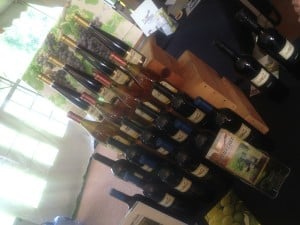
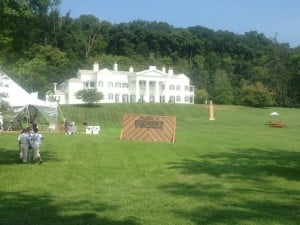
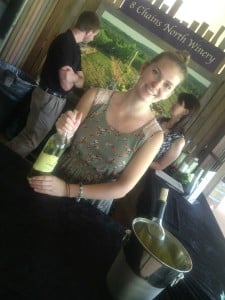
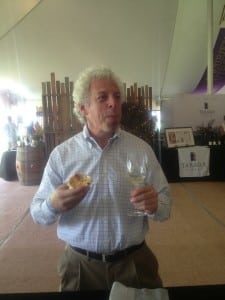
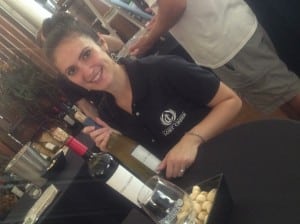
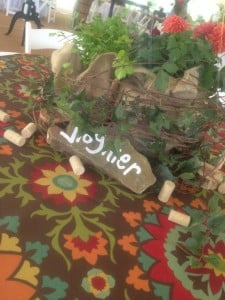
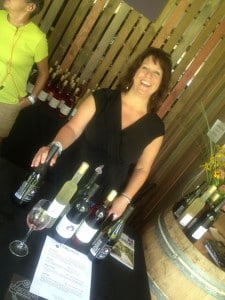
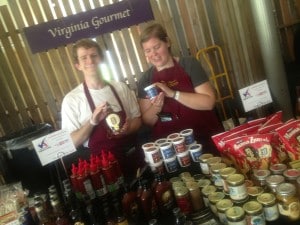
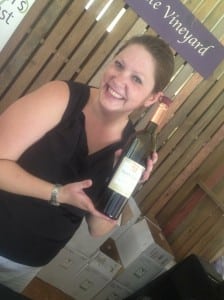
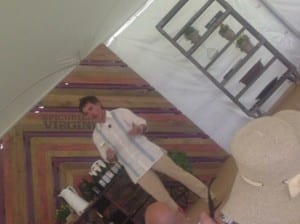
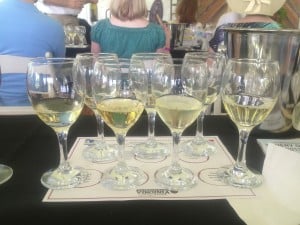
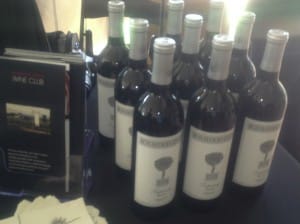
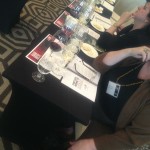
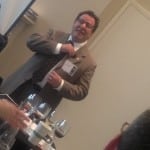
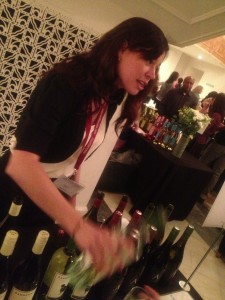
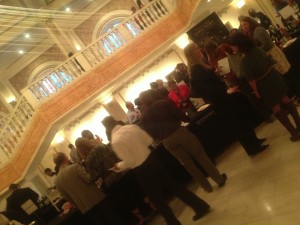
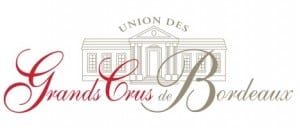


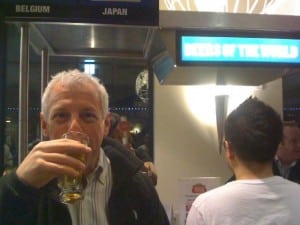 Charlie Adler – Drinking on the Job!
Charlie Adler – Drinking on the Job!